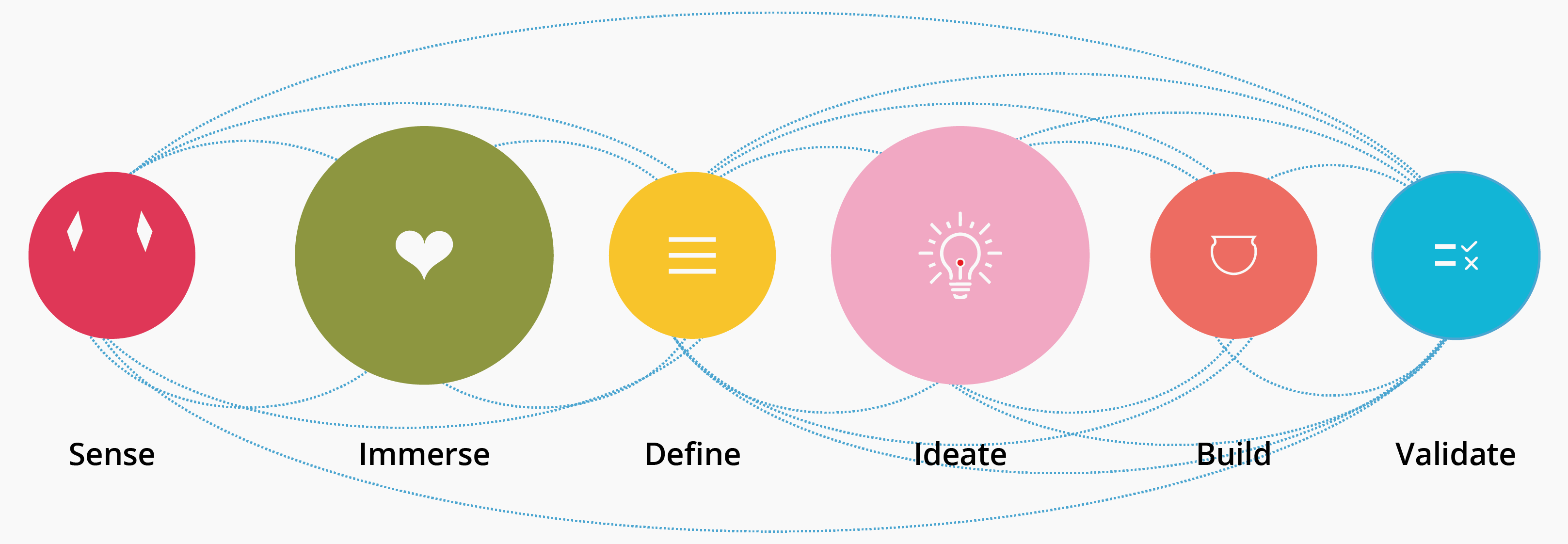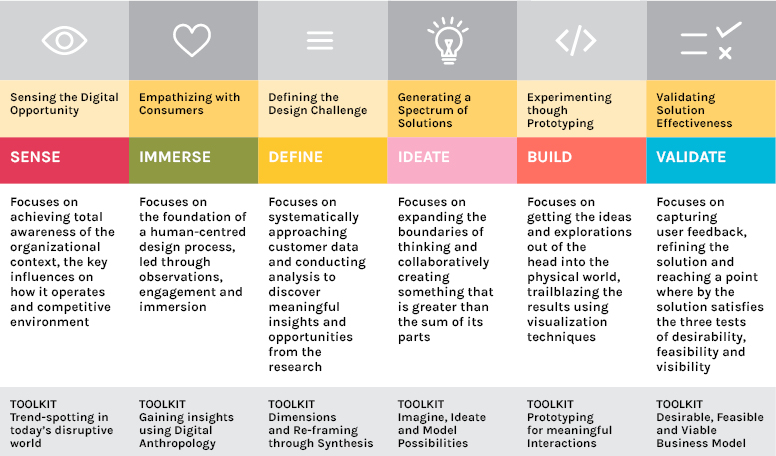Design Thinking

The customer is all-pervasive, taking an up-close look at their needs, wants, and aspirations hence becomes a paramount factor for being relevant in the marketplace.
The digital revolution has enabled customers to access information anywhere and anytime empowering them to demand excellence from enterprises addressing their needs and aspirations.
Welcome to the world of ‘Interaction Economy’
Business strategy is now converging with experience strategy. Interaction and experience have become the primary basis for competitive advantage today. To succeed, business leaders must place people at the heart of everything they do and harness the power of design. Today, the very existence of organizations hinges on the ability to listen and respond continuously to the market demands.

There is clear evidence that design-centric companies are outperforming conventional organizations. Design Thinking infuses the consumer perspective into the enterprises giving them an edge in leadership, strategy development, and creation of products, and services.
In this era of technological change, driven by the convergence of social, mobile, and cloud technologies, every enterprise must re-examine its future strategy by creating an abstract model of their business, understand the inherent risks posed by ‘newcomers’ and opportunities, by deep diving into its customer’s mind to understand their expectations, or risk losing competitiveness. Design Thinking brings in this much-needed relevance and differentiation and a steppingstone to customer-centricity. A Design Thinking approach helps manage change and gives focus and clarity to your digital initiatives.
A Unified Framework for Innovation and Problem Solving
Enterprises are increasingly finding it difficult to differentiate their brands, products, and services in a digitally disruptive world. Your future success depends on how well you manage and respond to seemingly never-ending change. Design Thinking is a human-centered approach to innovation and problem-solving. It conceptualizes possibilities. Develop products and services that expand creativity and accommodate technology disruption. Design Thinking infuses the consumer perspective into the enterprises giving them an edge in leadership, strategy development, and creation of products, and services.

At Nihilent, we are one of the pioneers in advancing a Design Thinking approach to problem -solving. Our service offerings in Design Thinking include Design Thinking introduction to CXOs, Workshop on Design Thinking, and Problem-solving projects. We use Design Thinking to deliver a personalized and delightful customer experience. It is the structure and process we follow for every project.
We have integrated Design Thinking as a core foundational aptitude in our approach to problem-solving. It is what differentiates us. Our framework empowers and prepares our clients to apply Design Thinking’s transformative capacity to tackle their biggest challenges.

The key differentiators and highlights in Nihilent’s solution framework are in its holism, as symbolized by the first stage which we call ‘Sense’. In contrast to a muted emphasis or a complete disregard for this aspect, our ‘Holistic Design for Digital Innovation’ model emphasizes achieving total awareness, or in other words, knowing all that can be known before we embark on the innovation and solutioning journey. Furthermore, we leverage our ‘User Experience Lab’ to simulate real-life business scenarios.
Using the Design Thinking approach, we assist our clients in developing an innovative, collaborative, and efficient workforce for leveraging digital technologies. We also help in executing strategies for reaching out and recruiting, identifying, and provisioning need-based training, to manage employee performance and productivity.





